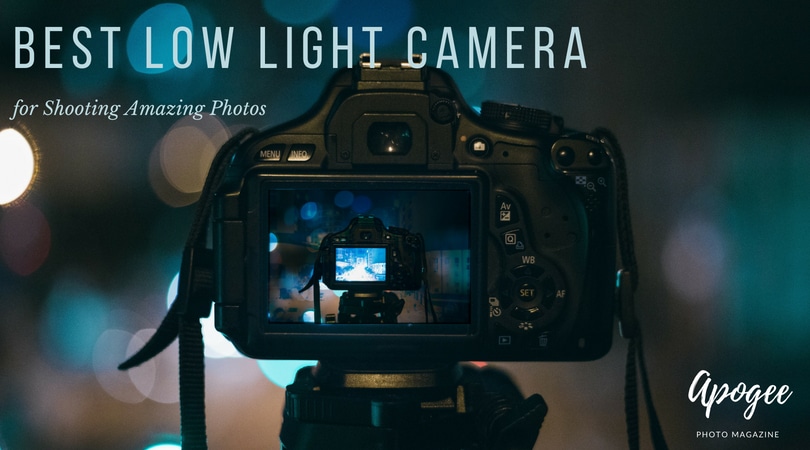 Years ago when I started my journey into the world of photography, I was introduced to the terms ‘Film Speed’ and ‘ASA.’ Both of these terms were related to how sensitive the film is to light. I.e., their ability to produce a well-exposed photograph even in low light. Years later when I made my first foray into digital photography I was reintroduced to this concept of light sensitivity in the form of a new abbreviation – ‘ISO.’
Years ago when I started my journey into the world of photography, I was introduced to the terms ‘Film Speed’ and ‘ASA.’ Both of these terms were related to how sensitive the film is to light. I.e., their ability to produce a well-exposed photograph even in low light. Years later when I made my first foray into digital photography I was reintroduced to this concept of light sensitivity in the form of a new abbreviation – ‘ISO.’
To be honest, there is no difference between the two terms. The ASA is used in the context of film photography and the ISO in context of digital photography. They both refer to the ability of a camera to make an image in low light.
Not much has changed in these three and a half decades. Low light photography remains the Achilles’ heel for any camera. This is because of one single factor called noise. I will explain it in detail as we go further, but for the moment know this – many things go into a camera’s low light photography capabilities. It is not just the ISO that it can shoot in, nor the software that resides inside the camera and processes the RAW files (when shooting in JPEG). There are plenty more factors involved.
Digital technology has helped the process of image making improve in rapid strides. Modern digital cameras have improved significantly in terms of their low light shooting capabilities. Yet, low light remains a fascinating subject and a tricky pursuit for most photographers. The point where it all starts is in choosing the right camera. That’s precisely what we are going to do too. We are going to find out the best low light camera that you can buy right now.
Making the Decision – What Features to look for in the best low light camera
What to look for – Sensor Size
The simple thing about sensor sizes is that the larger they are, the higher their ability is to capture light. In a low light situation when a camera is struggling to collect enough light, a larger light gathering surface is an advantage. Thus, a full-frame camera is a better bet than an APS-C camera.
Megapixels vs. Pixel Size
Don’t let your pixel fetish get the better of you. At least not when you are shopping for the best low light camera. A larger number of pixels may be great for capturing details, but when it comes to low light shooting you need large individual pixels. Bigger pixel size has a better signal to noise ratio and produces cleaner images.
Cross-type and Line Sensors (AF sensors)
An important consideration for choosing the best low light camera is to find out how many AF sensors it has and more importantly how many of them are cross sensors. Cross sensors can track contrast in two axes. Therefore they are likely to lock focus even in low light and low contrast scenarios where traditional line sensors will struggle.
Signal to Noise Ratio
I have used the term signal to noise ratio above and elsewhere in this guide. Now’s the time to explain exactly what I mean. Every signal contains useful information as well as the un-useful. We call it static in electronic signals. Noise is nothing more than the equivalent of static in light signals. Signal to Noise ratio suggests a quantification of that useful information in proportion to the information that is unusable.
Image Processor Generation
Just like in computer technology where every new processor generation improves the processing speed as well as the overall computing experience, in digital cameras too, every new processor improves processing speed, noise handling and other critical aspects of image making. The best low light camera is ideally the one with the latest processor.
ISO Invariance
You will hear of this term quite often. Probably you have already. ISO invariance is a term that is related with ISO and the low light proficiency of a digital camera. When you shoot in low light, you invariably push the ISO to a higher number to compensate for the lack of light in the scene.
The problem with that is you amplify not only the light signals but also the noise (specs of black and white that appear in your image). Noise is present in most images, but they are apparent in images that are shot in low light.
One way to handle this is by shooting the images in low light with a low base ISO and then increasing the exposure during post-processing. But with most sensors, increasing the exposure in post also increases noise.
There are some Sony sensors, however, which have a low noise threshold. These sensors can record a low light scene using a low ISO number. The recorded RAW image can then be post-processed, and the exposure pushed up without adding any extra noise than what you would have had you shot the image in the correct ISO. This is known as ISO Invariance. The best low light camera system should ideally be ISO invariant.
This does one thing, and that is it eliminates the need to shoot at a high ISO number and therefore embed the noise right in the RAW image. However, ramifications in specific areas in low light photography will happen, especially in astrophotography and portraitures.
Product recommendations
Sony a7S II Mirrorless Digital Camera
My first pick is the current low light champion – the Sony Alpha a7S II mirrorless digital camera. There are a few things that will strike you immediately as you skim over the spec sheet. First, this is a full-frame camera. A full-frame camera as I have explained above has a larger surface to gather light. That invariably means you can make a proper exposure even in low light conditions where smaller sensors likely struggle.
Second, the resolution of the sensor is 12.2 megapixels only. That invariably means very large pixel size. Large pixel size translates into a greater amount of light captured during the exposure. That equals lower noise signature and cleaner images.
One of the big advantages of the Sony a7S II (and for that matter any mirrorless system camera) is that it is a live-view camera. In other words, the view you see on the back LCD screen is exactly what the sensor sees, with no adjustments. This is precisely how the image will be captured if you press the shutter button at that point. It is thus, effortless to correct exposure before making a picture.
Another nice feature on the camera is the silent mode. Not to encourage peeping toms or something but the silent mode is useful when you are shooting at a club, or inside a church or for that matter anywhere where the noise of a shutter can be deafening. The best thing is silent mode works even with continuous shooting.
What we don’t like is that Sony does not offer the opportunity to shoot in silent mode when using flash. Probably they feel when you are using flash you are not trying to be discreet!
The final thing that we like about the a7S II is the Auto ISO feature. Now, you may already be aware of what Auto ISO does. Auto ISO is a smart feature on most medium and high-end cameras that allow the camera to adjust the ISO number automatically based on the shutter speed and aperture that you dial in.
The Sony Alpha a7S II mirrorless digital camera's Auto ISO feature comes with five different setting options. These features allow you to set the slowest shutter speed that you can handle while maintaining a decent exposure. Auto ISO feature lets you use up to a maximum of ISO 409600.
Specification List
– Full-frame sensor
– 12.2 megapixel sensor resolution
– BIONZ X image processing engine
– ISO invariant
– Auto-focus even at -4 EV
– Silent Shot technology works even in continuous shooting mode
- Full-frame camera with 5-axis image stabilization
- Fast and effective, enhanced Fast Hybrid AF
- 12.2 megapixels 10 35mm full-frame Exmor CMOS sensor Lens Compatibility - Sony E-mount lenses
- BIONZ X image processing engine ; Clear Image Zoom :Still/Movie: Approx. 2x
- In the box: Rechargeable Battery NP-FW50; Cable Protector; AC Adaptor AC-UUD11; Battery Charger BC-VW1; Shoulder strap; Body cap; Accessory shoe cap; Eyepiece cup; Micro USB cable
Nikon D5
The Nikon D5 replaced the D4 as Nikon’s top of the line (flagship) camera. Though this camera is geared predominantly for sports and wildlife photographers, it is just as good for shooting low light photos. Nikon has revamped the software, and it now has a native ISO range of 100 – 102400.
That said, even though the native ISO maximum limit has gone up, usability remains a question mark. The images at the higher end of the native ISO limit lacks contrast and detail. Thus, one should try and stay within 12800 to make usable images.
One more feature of the D5 is the presence of 153 AF points, 99 out of which are cross-type. Cross-type AF points, as has been explained above tracks contrast in both horizontal and vertical axis. That gives them better focus locking prowess as compared to traditional line sensors.
An image processor is a big factor as already explained, above. The D5 has Nikon’s latest image processor the EXPEED 5. This sensor has heightened light sensitivity and reduced noise signature compared to the previous generation image sensors. Of course, there are other advantages to the sensor, but when it comes to low light photography cleaner imagery is of paramount importance.
Another aspect that is related with lowlight photography is the auto-focusing prowess of the camera. Low light scenarios pose a typical challenge wherein the camera struggles to find contrast in the scene and therefore lock focus. This is why a lot of photographers shooting low light photography prefer to use manual focusing.
Another factor that compounds this issue is when you are shooting landscapes or street scenes, or night time architecture. To keep the composition crisp sharp across the frame, invariably a small aperture (like f/8 is used). Not many cameras give the same auto-focusing freedom at f/8 as it does at f/1.8.
The Nikon D5's greatest strength is that all of its focusing points are capable of functioning and locking focus at -3EV. The center cross-type point is capable of locking focus even at -4EV. Up to 15 of the 153 AF points function even at f/8 with 9 of the points remaining selectable.
Specification List
– Full-frame sensor
– 20.8 megapixel resolution
– EXPEED 5 image processor
– Not ISO invariant
– Auto-focus even at -4 EV
– Silent shooting mode is not as evolved as Sony a7S II
- 20.8MP FX-Format CMOS Sensor
- EXPEED 5 Image Processor
- 3.2" 2.36m-Dot Touchscreen LCD Monitor
- 4K UHD Video Recording at 30 fps
- Multi-CAM 20K 153-Point AF System
Nikon D810
The Nikon D810 is the successor to the highly accomplished D800 and the D800E. The 36.3 megapixel full-frame sensor powers this camera. The D810 is definitely a camera designed keeping in mind the photographer looking for details. Not exactly what a low light photographer is looking for, but regardless, the D810 shows good low light capabilities.
The D810’s image processor is the (slightly dated) EXPEED 4 processor. Slightly less capable than the EXPEED 5 image processor that powers the D5. ISO sensitivity of the D810 is 64 – 12800. It means you can shoot good exposures even in low light situations with the higher ISO number. Plus, the lower base ISO number ensures that the signal to noise ratio remains very high, producing cleaner images when shooting in better lighting.
This also comes in handy when shooting scenes with huge dynamic range. The D810 can retain details in the highlights better while ensuring that shadows, as well as the mid-tones, remain reasonably clean and with good dynamic range.
Now for auto-focusing performance. The D810 comes with a 51-point AF system together with Nikon’s Multi-CAM 3500 FX system. 15 of these AF points are cross-type. Plus, 11 of these points can auto-focus even at f/8.
The D810’s auto-focusing performance in real world scenarios, and by that I mean real life low light situations, is not at par with those of the Sony a7S II and the D5 or for that matter even some of the mid-range models from Nikon.
Having said that, the dynamic range of the D810 is superb. It retains details from highlights and shadows much better than the erstwhile D800, especially when shooting in low light scenes. Plus, noise is also very well suppressed. And that gives the D810 a position on this list.
Another feature is the Group Area AF. This technology is borrowed from the previous flagship D4S. This technology groups 5 AF points together and uses them as one for auto-focusing accuracy.
The Nikon D810's biggest USP, apart from the resolution, is the 91000 pixel RGB metering sensor. This metering sensor is the same sensor that assists in tracking a subject in a non-stationary scene.
Specifications List
– Full-frame sensor
– 36.3 megapixels resolution
– EXPEED 4 image processor
– Not ISO invariant
– Big issue with auto-focusing, even at -1 EV.
– Silent shooting not at par with Sony a7S II
- 36.3 MP FX format CMOS sensor without an Optical Low Pass Filter (OLPF)
- 30 Percent faster EXPEED 4 image processing engine. Shutter Speed: 1/8000 to 30 sec
- 51point AF system and 3D Color Matrix metering III with a 91,000 pixel RGB sensor
- ISO 6412,800 expandable to 51,200
- Featuring a new RAW Small Size option, which produces 16MP images with much smaller file sizes
Nikon D850
Nikon’s newest full-frame camera the Nikon D850 has a 45.7 megapixel backside illuminated sensor. If you want a camera that shoots incredible images in low light but don’t want the D5’s bulk or price, then you could take a look at the D850.
The image processor on the D850 is the latest EXPEED 5, the same as the flagship D5. Add to that the large high-resolution BSI sensor and you have yourself a product that is a synergy of the D5 and the D810. A mix of low light capability, high-speed continuous shooting as well as high resolution.
Native ISO capability of the camera is 45.7 megapixels. This coupled with the BSI sensor ensures that the camera is capable of capturing an incredible amount of detail as well produce clean images in low light.
There are small touches which make this camera a pleasure to use in low light situations. For example the illuminated controls. This ensures that the photographer can see the functions and controls when s/he is a pitch black situation.
Technical improvement in the D850 is the new ‘Dual-Gain’ mechanism. It may sound pretty technical but what it does (in plain English) is that it suppresses the noise when reading the image information for high ISO shooting. Since even the slightest noise is amplified in the final scheme of things, even the slightest drop in readout noise ensures a much cleaner image.
That said dual gain kicks in about after ISO 400. The result of this is that images shot with a lower ISO number do not get any advantage from this. It is only when you shoot at anything above ISO 400 is when you get any noticeable advantage. So shooting at ISO 800 and then increasing the exposure by about two stops (ISO 3200) the result is the same as shooting at ISO 3200 in the first place.
Auto-focus, and since we are mainly discussing low light, in less than optimum lighting, is fair. Though not in the same league as the prolific D5, the 3D tracking of the Nikon D850 together with the 153-point AF system does a good job of subject tracking. That said, not all your low light subjects are going to be barn owls, so as long as you shoot with a fast stabilized lens you would be able to produce clean, usable files.
Specifications List
– Full-frame sensor (BSI)
– 45.7 megapixel resolution
– EXPEED 5 image processor
– Not ISO invariant up to ISO 400
– No major issues with AF performance, but not at par with the D5
– Silent shooting is better than the D810 but not at par as the a7S II
- Nikon designed back side illuminated (BSI) full frame image sensor with no optical low pass filter
- 45.7 megapixels of extraordinary resolution, outstanding dynamic range and virtually no risk of moiré
- Up to 9 fps1 continuous shooting at full resolution with full AF performance
- 8K6 and 4K time lapse movies with new levels of sharpness and detail; File system : DCF 2.0, Exif 2.31, PictBridge
- Tilting touchscreen, Focus Shift shooting mode, outstanding battery performance and much more; Total Pixels: 46.89 million
Canon 5D Mark IV

One would be tempted to ask why we left out the latest high megapixel behemoth from Canon, the 5DS R from our discussion. Well, the simple answer is we are talking about low light shooting and when it comes to low light shooting higher megapixel is an impediment.
The 5DS R is an incredible camera. No doubt about that. But between it and the 5DS and the latest Canon 5D Mark IV, the latter wins hands down as regards low light shooting. I prefer a low resolution (and therefore large individual pixel size) camera compared to a high resolution camera anytime, especially when I am shooting low light photography.
Another reason why the 5DS R loses out is because the maximum native ISO range of the camera is 6400. Compare that with the 5D Mark IV which can shoot at a maximum of ISO 32000, this gives you a much greater advantage tackling low light situations.
Where the Canon 5D Mark IV loses out to the 5DS R is the mirror technology. This is important for us when shooting in low light and hand holding the camera. The 5DS R uses the same technology that was introduced into the 7D Mark II; the mirror slows down at the last nanosecond to decrease the effect of the slapping movement. This reduces jerk and therefore image blur. At slow shutter speed (such as when shooting in low light) this is useful to have.
Specifications List
– Full-frame sensor
– 30.4 megapixel resolution
– DIGIC 6+ image processor
– Not ISO invariant
– Fast auto-focus performance
– Silent shooting not at par with the a7S II
- New 30.4 Megapixel* full-frame CMOS sensor for versatile shooting in nearly any light, with ISO range 100-32000; expandable up to 50-102400 (equivalent ISO).
- 4K Motion JPEG video (DCI cinema-type 4096 x 2160) at 30p or 24p; in- camera still frame grab** of 4K 8.8-Megapixel images; multiple video options include Full HD up to 60p, and HD up to 120p.
- Superb Dual Pixel CMOS AF for responsive and smooth AF during video or Live View shooting; LCD monitor has full touch-screen interface, including selection of AF area.
- Excellent performance - up tp 7.0 fps*** continuous shooting speed with high-performance DIGIC 6+ Image Processor for improved speed and excellent image quality.
- 61 AF points with expanded vertical coverage with 41 cross-points, and AF possible at all 61 AF points with many lens + extender combinations effective at f/8.
Conclusion and Our Choice
Hands down the Sony Alpha a7S II mirrorless digital camera wins the title of the best low light camera in this five-way shootout. The remaining cameras, dominated by the bulky DSLR designs are just no match for the low light prowess of this camera.
The biggest advantage of the a7S II is its large sensor size and the low resolution which means the individual pixels are quite large. As you are aware, large pixels have a larger light gathering capability and that only means low noise threshold leading to cleaner images.
Higher resolution cameras, thus, tend to suffer in low light scenarios. We had the Nikon D850 in this discussion which is also a great camera to shoot low light photos with. Plus, it comes with a BSI sensor. Despite that, the D850 falls short of the a7S II concerning the low light shooting, although it wins in almost every other aspect.
Add to that the fact that camera incorporates the latest Sony BIONZ X image processor. This processor is known for its low light prowess and the ability to process details out of shadow areas while also retaining details in the highlights – a typical low light scenario.
The native ISO range of the camera determines the most extreme case scenario wherein the sensor can produce a well-exposed photo. The native ISO (higher limit) of 102400 is also a big plus.








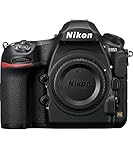

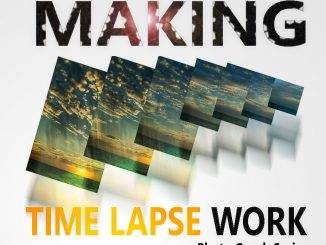
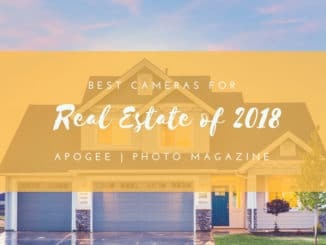
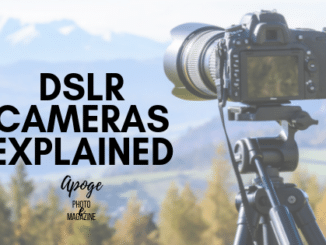
Leave a Reply